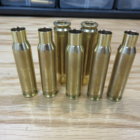Link
Silver $$ Contributor
Thank you all for the wisdom and advice. I don't have a ball micrometer to measure the actual case neck thickness before and after - closest I have is the Redding Case Neck Wall thickness guage, but I have always had my suspicions on how accurate it can actually tell the thickness - been using it basically just as an indicator of high/low spots, since I cannot see a reading change before and after turning necks.
I clamp my cutter to my bench and then manually manoeuvre the screwdriver to do the cutting. After cutting, the redding tool mostly shows a slight improvement in terms of needle movement and consistency on the dial at least, so I always assumed that the wobbling wasn't detrimental. But I couldn't help doubting myself, so I'm glad that I asked the question and got the answer.
Thanks again for all your comments on the topic.
I thought they said let both the cutter and driver float?











